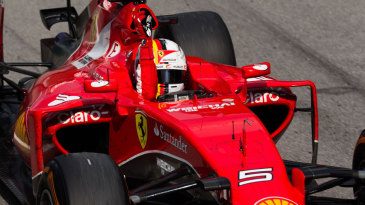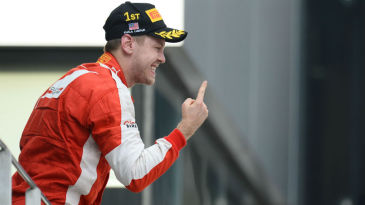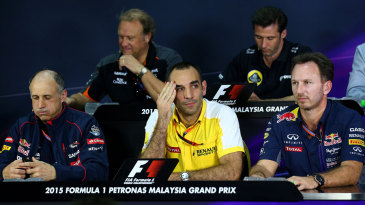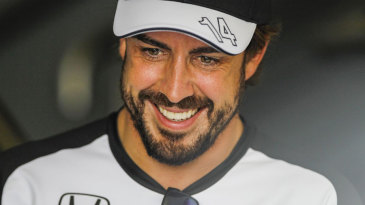
| Year | Engine | Driver | Race | Start | Won | Pod | Class | Best | 1+2 | Pole | Front | Best | Lap | Pts | Pos | ||||
|---|---|---|---|---|---|---|---|---|---|---|---|---|---|---|---|---|---|---|---|
| 1950 | Alfa Romeo | L Fagioli, JM Fangio, N Farina, R Parnell, C Sanesi, P Taruffi | 6 | 21 | 6 | 12 | 14 | 1 | 4 | 6 | 18 | 1 | 6 | 0 | - | ||||
| 1951 | Alfa Romeo | F Bonetto, L Fagioli, JM Fangio, N Farina, E de Graffenried, P Pietsch, C Sanesi | 7 | 27 | 4 | 9 | 19 | 1 | 1 | 4 | 14 | 1 | 7 | 0 | - | ||||
| 1963 | Alfa Romeo | P de Klerk | 1 | 1 | 0 | 0 | 0 | - | 0 | 0 | 0 | 16 | 0 | 0 | - | ||||
| 1965 | Alfa Romeo | P de Klerk | 1 | 1 | 0 | 0 | 1 | 10 | 0 | 0 | 0 | 17 | 0 | 0 | - | ||||
| 1979 | Alfa Romeo | V Brambilla, B Giacomelli | 5 | 6 | 0 | 0 | 2 | 12 | 0 | 0 | 0 | 14 | 0 | 0 | - | ||||
| 1980 | Alfa Romeo | V Brambilla, A de Cesaris, PAEJ Depailler, B Giacomelli | 14 | 26 | 0 | 0 | 3 | 5 | 0 | 1 | 1 | 1 | 0 | 4 | 11 | ||||
| 1981 | Alfa Romeo | MG Andretti, B Giacomelli | 15 | 30 | 0 | 1 | 15 | 3 | 0 | 0 | 0 | 6 | 0 | 10 | 9 | ||||
| 1982 | Alfa Romeo | A de Cesaris, B Giacomelli | 16 | 32 | 0 | 1 | 13 | 3 | 0 | 1 | 2 | 1 | 0 | 7 | 10 | ||||
| 1983 | Alfa Romeo | M Baldi, A de Cesaris | 15 | 29 | 0 | 2 | 11 | 2 | 0 | 0 | 0 | 3 | 1 | 18 | 6 | ||||
| 1984 | Alfa Romeo | EM Cheever, R Patrese | 16 | 31 | 0 | 1 | 12 | 3 | 0 | 0 | 0 | 7 | 0 | 11 | 8 | ||||
| 1985 | Alfa Romeo | EM Cheever, R Patrese | 16 | 32 | 0 | 0 | 8 | 9 | 0 | 0 | 0 | 4 | 0 | 0 | - | ||||
| Total | 112 | 236 | 10 | 26 | 98 | 1 | 5 | 12 | 35 | 1 | 14 |
| Race | Circuit | Date | ||
|---|---|---|---|---|
| First race | British Grand Prix | Silverstone | May 13, 1950 | Race results |
| Last race | Australian Grand Prix | Adelaide | November 3, 1985 | Race results |
Alfa Romeo was an evocative motor sporting name of the 1920s and 1930s and was also prominent immediately after the Second World War. The name is an emotive one, but the company last won a grand prix in 1951.
Alfa Romeo entered the grand prix arena in 1924. One of the most brilliant designers of the age was Vittorio Jano. After 12 years with Fiat, one of the most successful makes from the sport's early days, Jano was lured to Alfa Romeo in 1923 and his P2 became the standard setter for the next two years. Antonio Ascari won the car's first race, at Cremona, and so crushing was the Italian superiority in the 1925 Belgian Grand Prix at Spa, that Jano actually laid out a quality lunch in the pits and called his drivers in to partake while the mechanics polished the cars. The team then continued with their dominant display!
Their fortunes changed when Ascari was killed in the French Grand Prix at Montlhery, but Alfa Romeo still took the constructors' championship title and added a laurel wreath to its distinctive cloverleaf badge.
Another Jano great was the Alfa Tipo B that made its first appearance in 1932. Between then and 1934, it won every grand prix in which it was entered, driven by the likes of Rudolf Caracciola and the great Tazio Nuvolari, who many rate as the greatest driver of all time. In 1933, Alfa Romeo was nationalized and officially withdrew from the sport, although Ferrari continued to field the cars on a semi-works basis.
Even against the might of the emerging German marques such as Mercedes and Auto Union, Nuvolari managed some mighty feats with the Tipo B, none better than his win in the 1935 German Grand Prix.
Alfa took full control of its racing programme again in 1938, but the war intervened. Put off by the German dominance of grand prix racing in the late 1930s, Gioacchino Columbo designed an Alfa Romeo Tipo 158 for the smaller voiturette class in 1939.
It was hidden in a cheese factory while the Germans occupied Italy, but under the new, pragmatic postwar regulations it automatically became a grand prix car and dominated the scene for the remainder of the 1940s. Alfa Romeo enjoyed a string of 26 unbroken wins.
By 1951, some 13 years after it was designed, the supercharged car, now in 159 guise, took Juan Manuel Fangio to his first world title in the final race of the season, the Spanish Grand Prix, in a shoot-out against the Ferraris of Alberto Ascari, Froilan Gonzalez and Piero Taruffi. It was the car's last race and Alfa Romeo then turned its attention to sports car racing.
In the mid-1970s their flat-12 sports-car engine started to attract the interest of the Formula One brigade, who were watching Ferrari dominate proceedings with an engine of similar configuration. Former Ferrari engineer Carlo Chiti was responsible for the engines and he did a deal with Bernie Ecclestone to supply them to the Brabham team.
Autodelta was Chiti's company and the organization that conducted Alfa's racing programme. The Brabham-Alfas started to show good form and, despite a strong union movement that was opposed to rich man's sport, Alfa Romeo was not slow to recognize the possible benefits of its own programme. In 1979, Bruno Giacomelli debuted the ugly-looking Tipo 177 in the Belgian Grand Prix at Zolder. As Brabham reverted to Ford power, the new Alfa V12 was put into a new Tipo 179 chassis and, with Giacomelli joined by Patrick Depailler for 1980, the outlook was healthier. Sadly, though, Depailler was killed in testing at Hockenheim and, although Giacomelli led the United States Grand Prix at Watkins Glen before the car expired, Alfa Romeo was not destined to enjoy the success of its heyday.
Andrea de Cesaris led the Belgian Grand Prix at Spa-Francorchamps in 1983, but the marque did not win another grand prix before quitting again.
Reproduced from The Ultimate Encyclopedia of Formula One published by Carlton Books
- One-hit wonders (August 16, 2012)
- From humble beginnings ... (July 9, 2010)
- Jones wins as Patrese stars at Long Beach (March 15, 1981)
- Laffite ends Jones run (August 10, 1980)
- Farina engine blow hands race to Taruffi (May 18, 1952)




